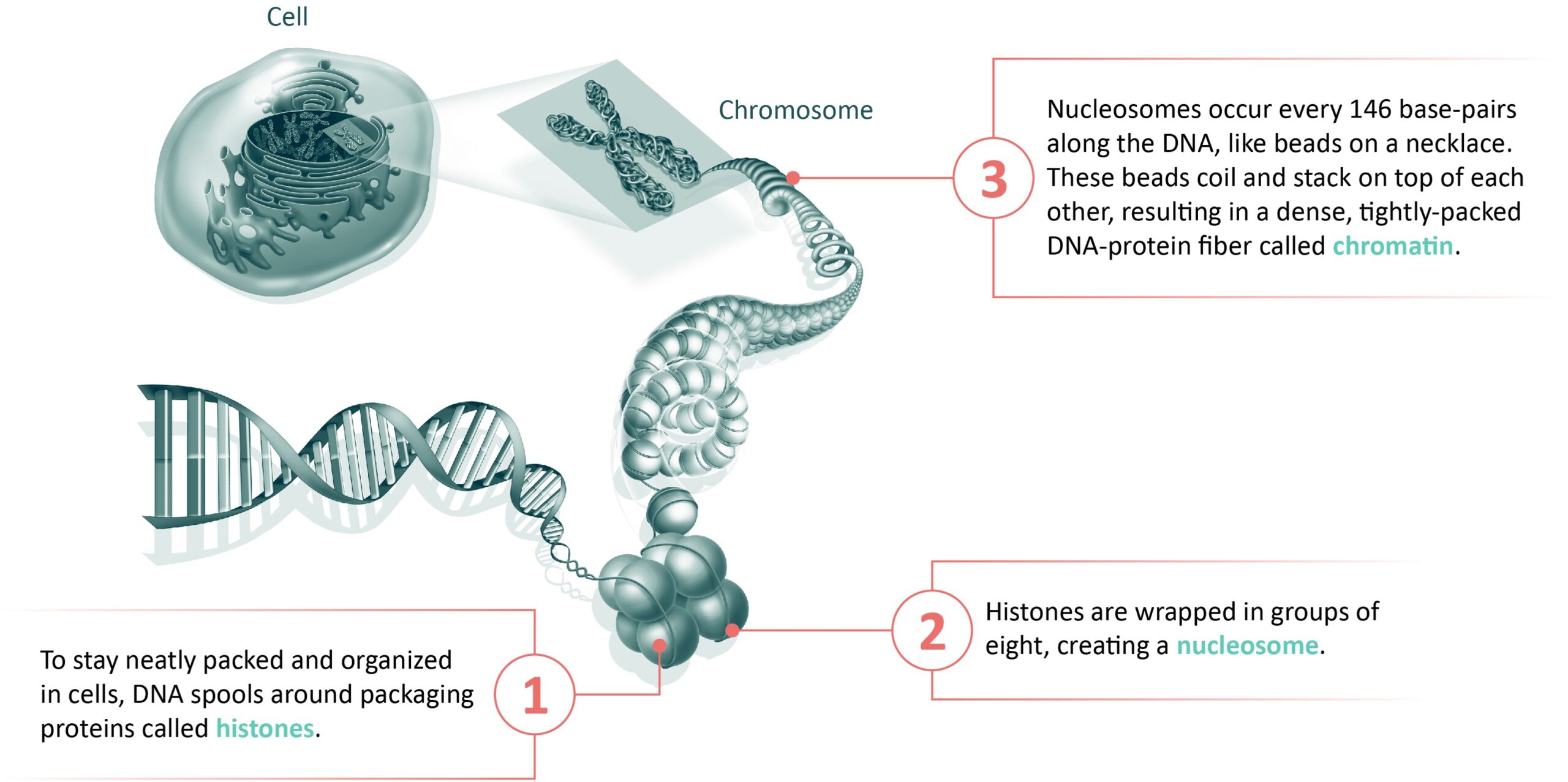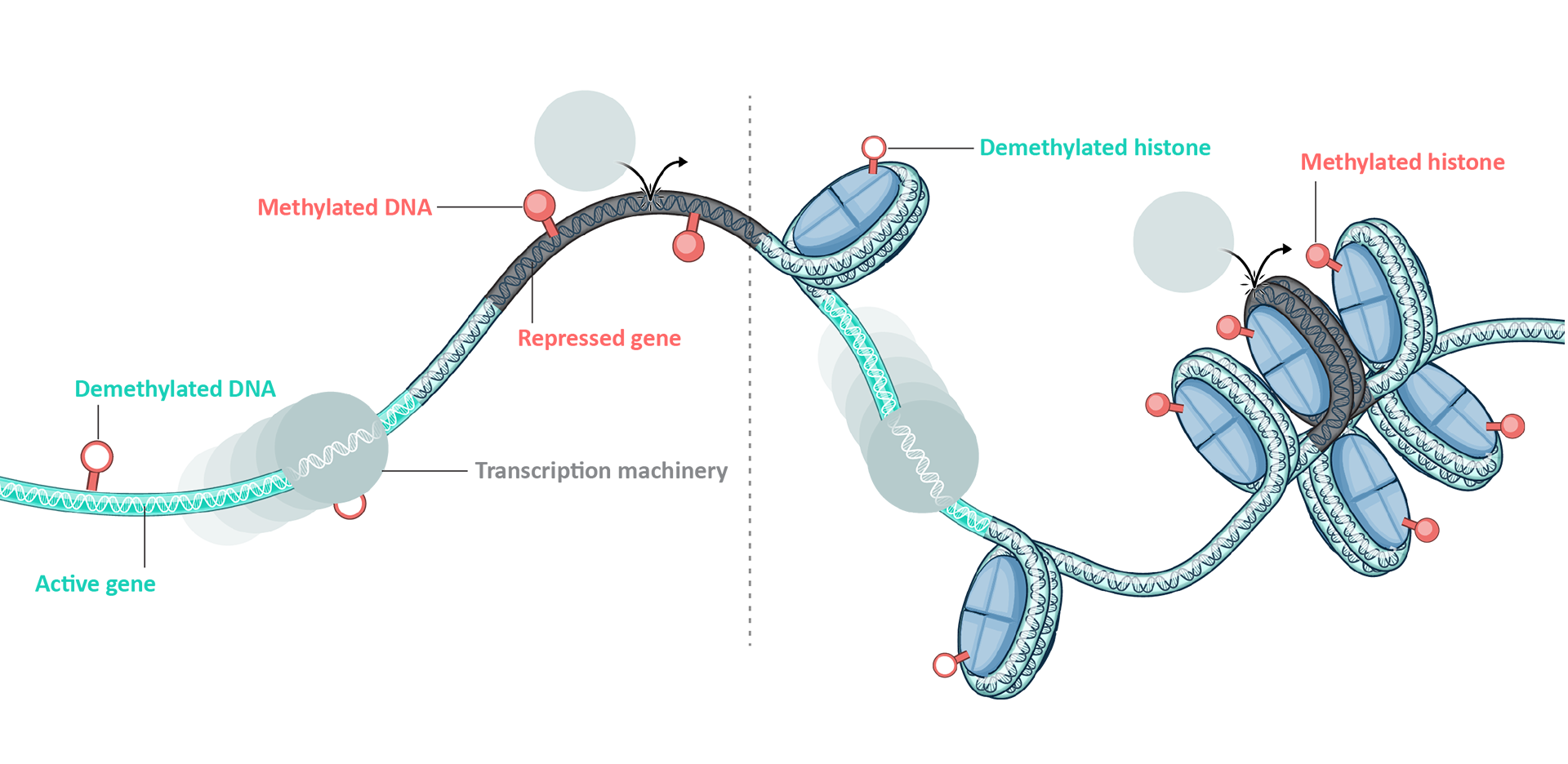DNA, Genes, and Disease
Most of us are familiar with the idea of DNA as the fundamental blueprint for life.
Since the 1950s, we’ve understood that every living cell contains DNA, which carries the coded instructions (genes) for building functional proteins and cells. If your DNA is damaged or altered by mutation, then your cells and tissues may end up without a specific, functional protein. If it turns out that function was essential for health, then losing that protein creates dysfunction in the body. This is the basis of genetic disease, which can be passed down through generations.
It’s a simple and compelling story, and one we have all come to accept.
But many common and complex diseases – including each and every type of human cancer – involve reversible changes to your cells that do not alter their core DNA sequence, but do change how that DNA is read, translated, and used.
These are called epigenetic changes (literally: “on-top-of-genetic” changes). While genetic changes affect the basic structure and function of a gene, epigenetic changes control the expression, coordination and effect of whole networks of genes within specific cell types. In other words, every cell in your body does contain the same DNA, and the same set of genes. But it is these epigenetic controllers that make the difference between a blood cell and a liver cell; between a healthy cell and a cancerous one.
The epigenome is the system of marks and mechanisms that controls which genes are expressed, and how much. Together, they are the conductors of the genetic orchestra – directing and determining the what, where, when, how, and ultimately the why of the cell.
In short: the epigenome shapes and reshapes the functional identity of the cell.
Structure of the epigenome

Chromatin fibers are wound and packaged into more massive chromosomes for the safe storage and transport of DNA between dividing cells. This is what allows us to cram roughly 6 feet (2m) of DNA into every single cell in our bodies.
Chromatin can also be unwound by the epigenome to varying degrees when needed – allowing the genes therein to be accessed, read, translated, copied, and repaired.
This dynamic packing state forms the backdrop and context for the epigenetic regulation of genes and gene networks. Throughout the length of each chromosome, epigenetic control elements act to alter local interactions between DNA and the histones – in effect, keeping some genes tightly packed and inaccessible, while unwinding and exposing others for active use.
These control elements can take several modes of action, including modifying histone proteins or methylating or demethylating DNA. In this way, gene expression is selectively activated or repressed in different cell types and states. It is the balance of these differential expression levels that creates the varying states and identities of cells.
Just as we refer to the total set of genes present in a cell as its genome, the epigenome is the total set of epigenetic marks and modifications that potentially alter gene expression within a cell. The study of which is called epigenomics.
How the epigenome controls gene expression

Epigenetic Change and Memory
So how long do these epigenetic marks and changes to gene expression last?
In most cells, epigenetic marks and modifications are quite stable – becoming fixed as cells differentiate from stem cells into different cell types (e.g., into nerve cells, bone cells, or cardiac muscle cells), and persisting through cell growth and division for a person’s entire lifetime. So muscle cells divide into muscle cells rather than bone cells; blood cells beget only blood cells, and so on. This is sometimes called somatic genetic memory.
Some epigenetic changes are transient and short-lived, but many (including cell type specification) may persist through for an entire lifetime. This gives the epigenome a range of temporal effects – allowing for fine-tuned control of gene expression, cellular state, and cellular identity that can be sustained over both short and long timescales.
The Master Mechanism
Given this full context, we see that the epigenome is the master mechanism for gene expression in all human cells. And this is what makes the scientists at Tune so excited.
Over the last decades, scientists have been steadily unraveling the marks and mechanisms of epigenomics, with a view to harnessing its awesome power to transform and direct cell states. On the one hand, it has granted us new paths of understanding the complexity of human disease. On the other, it has provided us with an entirely new toolbox for addressing those diseases.
Tune is effectively orchestrating these naturally-occurring conductors of gene expression – to nudge and rebalance gene expression levels, and to shift the functional states and identities of cells. In so doing, we have the potential to take any cell type and disease state, to reassign the patterns of expression that led to disease, and to arrive at powerful, potentially curative solutions in the form of corrective or regenerative therapies.